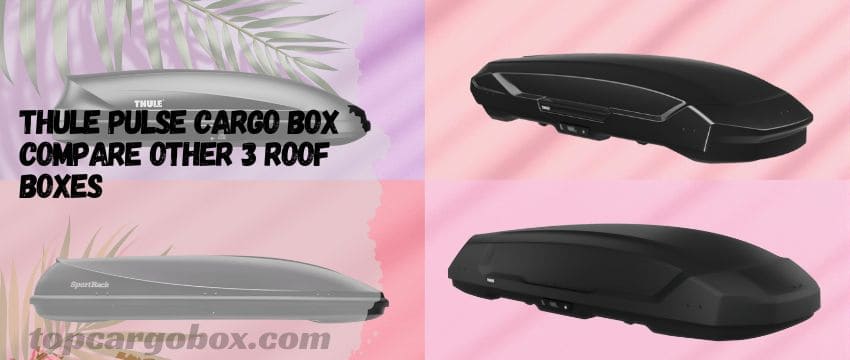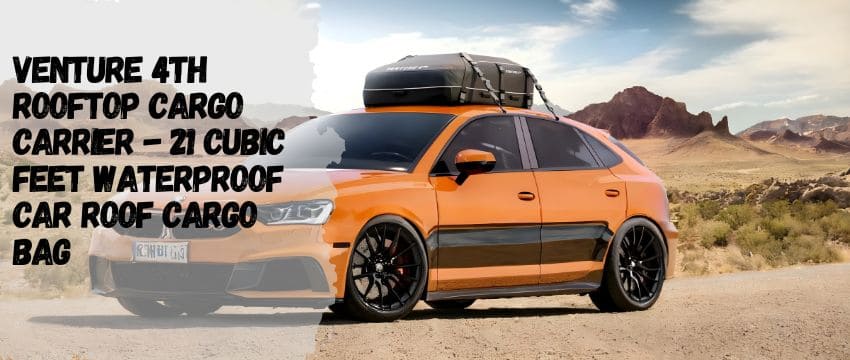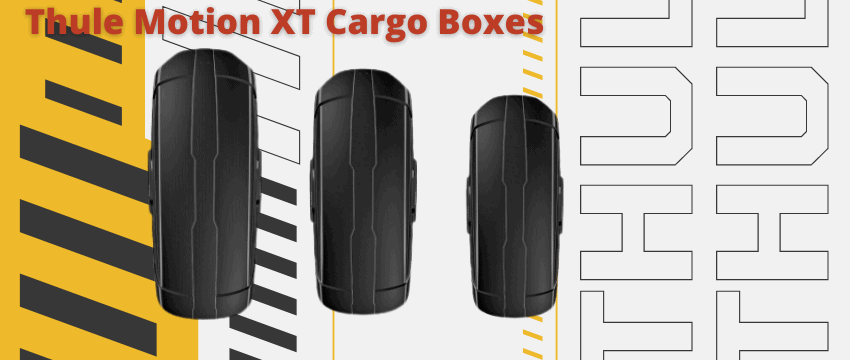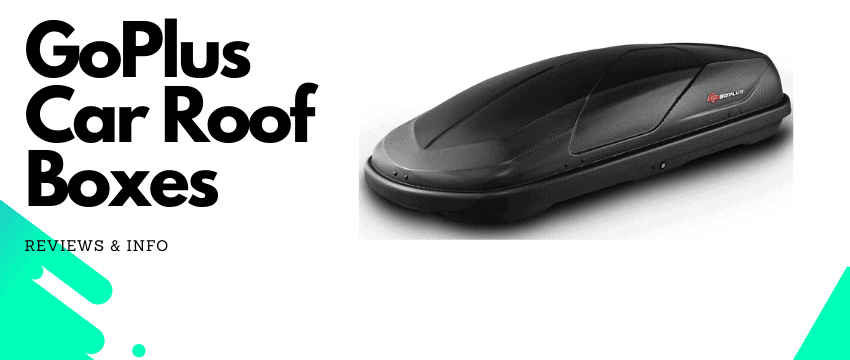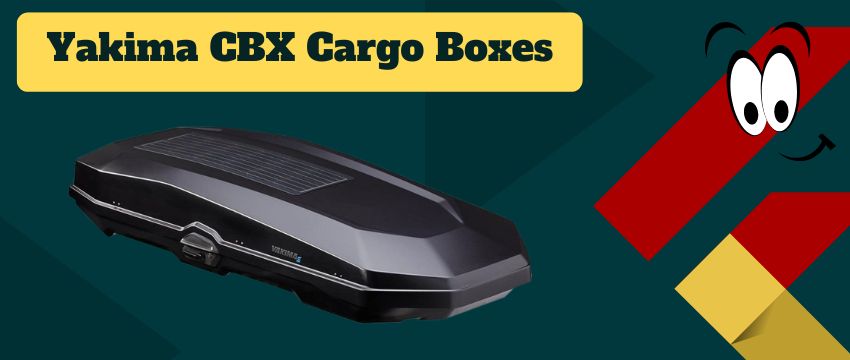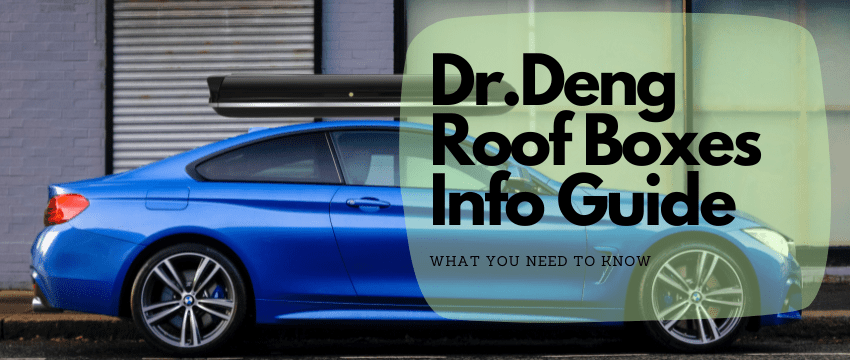Ever felt like your car’s trunk is playing Tetris on expert mode every time you pack for a trip? You’re not the only one sweating over cramming skis, tents, or what feels like half the soccer league’s gear into your ride. That’s where the Thule 614 Pulse Cargo Box rolls in—think of it as your car’s new sidekick for those “how did I even fit this?” moments. With 14 cubic feet of space, this rooftop hero swallows gear faster than a black hole, leaving your backseat free for snacks and sanity. Seriously, why stress about luggage wars when you could be vibing to road trip playlists instead?
Ever had that mini-heart attack when your gear shifts mid-drive? Yeah, sucks big time. The Thule 614 Pulse locks your stuff down tighter than a vault, thanks to its SecureLock lid and keys that don’t bail mid-adventure. Toss in 3-5 snowboards, a cooler bursting with snacks, or your kid’s entire sports arsenal—no sweat. And hey, loading from the passenger side means you’re not dodging traffic like an action hero just to grab your tent poles. How’s that for a win? Whether you’re chasing powder or weekend campground vibes, this box isn’t just storage—it’s your backstage pass to less chaos and more “let’s do this again next weekend.”
Why the Thule 614 Pulse Deserves a Spot on Your Roof
It’s All About That Space (and Pace)

Ever wish your car could magically grow extra storage like a clown car? While we’re still waiting on that sci-fi upgrade, the Thule 614 Pulse Cargo Box gets pretty close. Packing 14 cubic feet of space, it’s like stuffing a second trunk on your roof—minus the wizardry. Picture this: 3-5 snowboards, a week’s worth of camping gear, or enough luggage for your entire squad. And with dimensions of 67”L x 35”W x 16”H, it’s roomier than that closet you’ve been avoiding cleaning. How’s that for turning “packing panic” into “chill vibes only”?
Ever cringed at rooftop boxes that look like they belong on a spaceship? The Pulse’s low-profile design keeps things sleek, so your ride doesn’t scream “I’m hauling a UFO.” Slap this thing on your roof, and you’ll still fit into parking garages without playing bumper cars with the ceiling. Plus, that 16-inch height means less wind drag—no more feeling like you’re fighting a hurricane at highway speeds. Who knew practicality could look this good?
Think bulky cargo boxes are a pain to live with? Not this one. The Pulse’s streamlined shape means you can leave it up there year-round without the guilt of murdering your gas mileage. Toss in skis, surfboards, or even that inflatable kayak you swore you’d use more often. And hey, 110-pound load limit means you’re not just hauling feathers—this box handles the heavy stuff without breaking a sweat. For real, why settle for less when your gear deserves first-class treatment?
Built Tough, Not Rough
Made from rugged ABS plastic, this box laughs at rain, snow, and rogue shopping carts. Thule even torture-tests their gear at their own Test Center—because who wants a cargo box that quits after one pothole? Pro tip: The aerodynamic shape cuts wind noise, so you can binge-watch podcasts without that whoosh soundtrack.
Features That’ll Make You Say “No Way!”
Mounting Made Stupid Simple
Remember the last time you tried assembling furniture? Yeah, this isn’t that. The Easy-Grip knobs let you attach the box to most roof racks in under 5 minutes. No tools, no swearing, just twist-and-go. Even better, it works with Thule racks, round bars, and most factory systems. Boom.
Security You Can Actually Trust
Worried about your gear taking a midnight stroll? The SecureLock lid ensures every edge snaps shut, and the Thule Comfort Key only comes out when everything’s locked. Translation: No more paranoid pit stops to check if your skis are still up there.
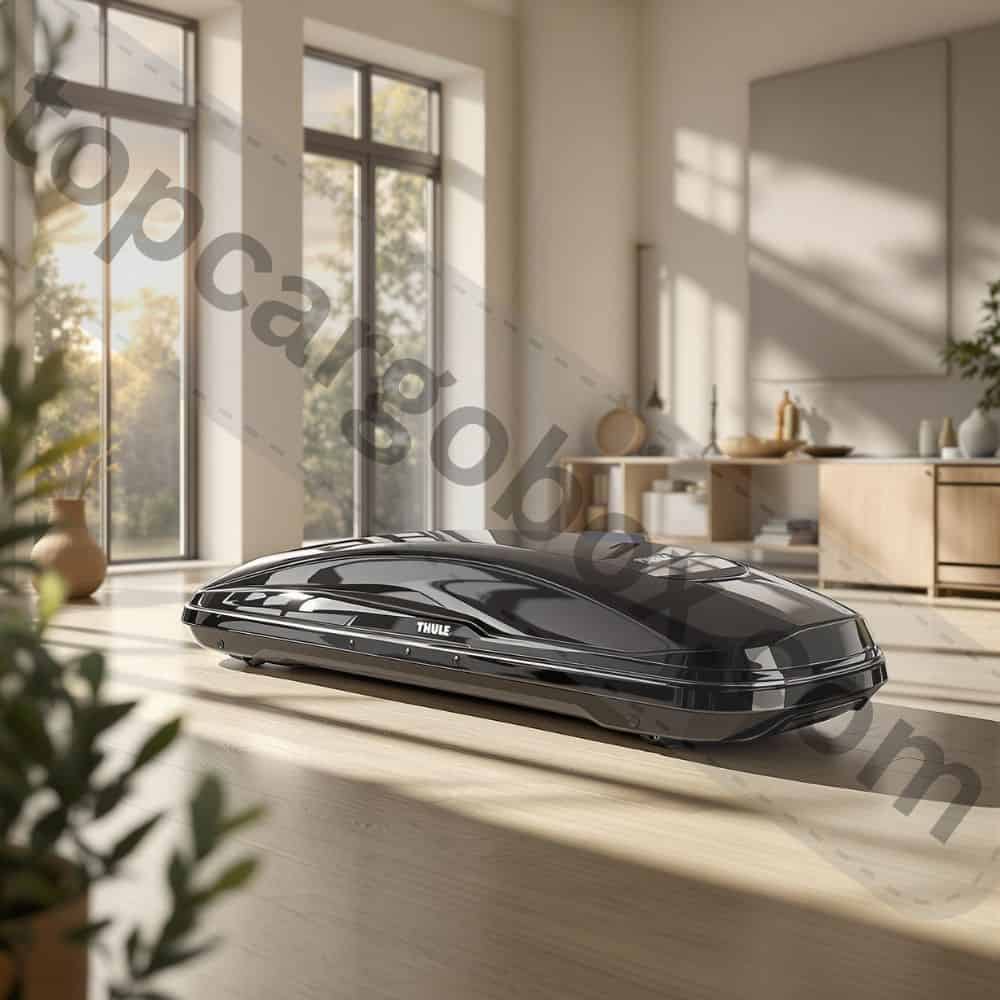
Passenger-Side Loading FTW
Ever tried unloading gear on the driver’s side while traffic whizzes by? Spoiler: It sucks. Thule’s passenger-side opening lets you load safely, and the built-in lid lifters hold it open hands-free. Perfect for when you’re juggling coffee and a sleeping bag.
Specs at a Glance
| Feature | Details |
|---|---|
| Storage Capacity | 14 cubic feet (fits gear for 2-3 people) |
| Weight Limit | Holds up to 110 lbs—about 5 full suitcases or 3 kayaks |
| Material | Rugged ABS plastic (weatherproof and dent-resistant) |
| Mounting | Easy-Grip system (no tools needed) |
| Locking | Central Locking + Thule Comfort Key |
| Warranty | Limited Lifetime (because Thule’s got your back) |
Real Talk: Who’s This Box For?
The Weekend Warrior
If your idea of a good time involves trails, slopes, or lakes, this box is your ticket. It fits snowboards up to 155 cm, tents, coolers—you name it. Check out how it stacks up against the Yakima RocketBox Pro for more adventure-ready options.
The Family Road Tripper
Packing for kids is like playing Tetris on hard mode. The Pulse’s 14 cubic feet swallows strollers, duffels, and that giant stuffed unicorn your daughter “needs.” Plus, the low profile means you won’t scrape garage ceilings. Mic drop.
But Wait—Any Downsides?
Is it perfect? Well, the matte black finish is sleek but shows scratches if you’re careless. And while 34 lbs isn’t back-breaking, hoisting it solo might require some grunt work. Still, compared to the SportRack Horizon, the Pulse’s durability wins hands-down.
How to Keep Your Box Happy
Want this thing to last decades? Rinse it with mild soap (no harsh chemicals!), lube the locks with graphite, and store it indoors when not in use. Thule’s warranty covers defects, but cosmetic rust from neglect? That’s on you, buddy.
Thule vs. The World
Thule Pulse vs. Yakima CBX
The Yakima CBX offers more color options, but the Pulse’s SecureLock system edges it out for security. Plus, Yakima’s price tag might make your wallet cry.
Thule vs. Rhino Rack
Rhino’s boxes are sturdy but lack Thule’s finesse. The Pulse’s Easy-Grip mounting? Chef’s kiss. For a deep dive, peep this Thule Motion XT comparison.
Final Verdict: Is It Worth It?
Short answer: Abso-freaking-lutely. Between the idiot-proof installation, bombproof build, and Thule’s killer warranty, this box pays for itself in peace of mind. Still on the fence? Check out the 14 Best Cargo Boxes to see how the Pulse dominates.
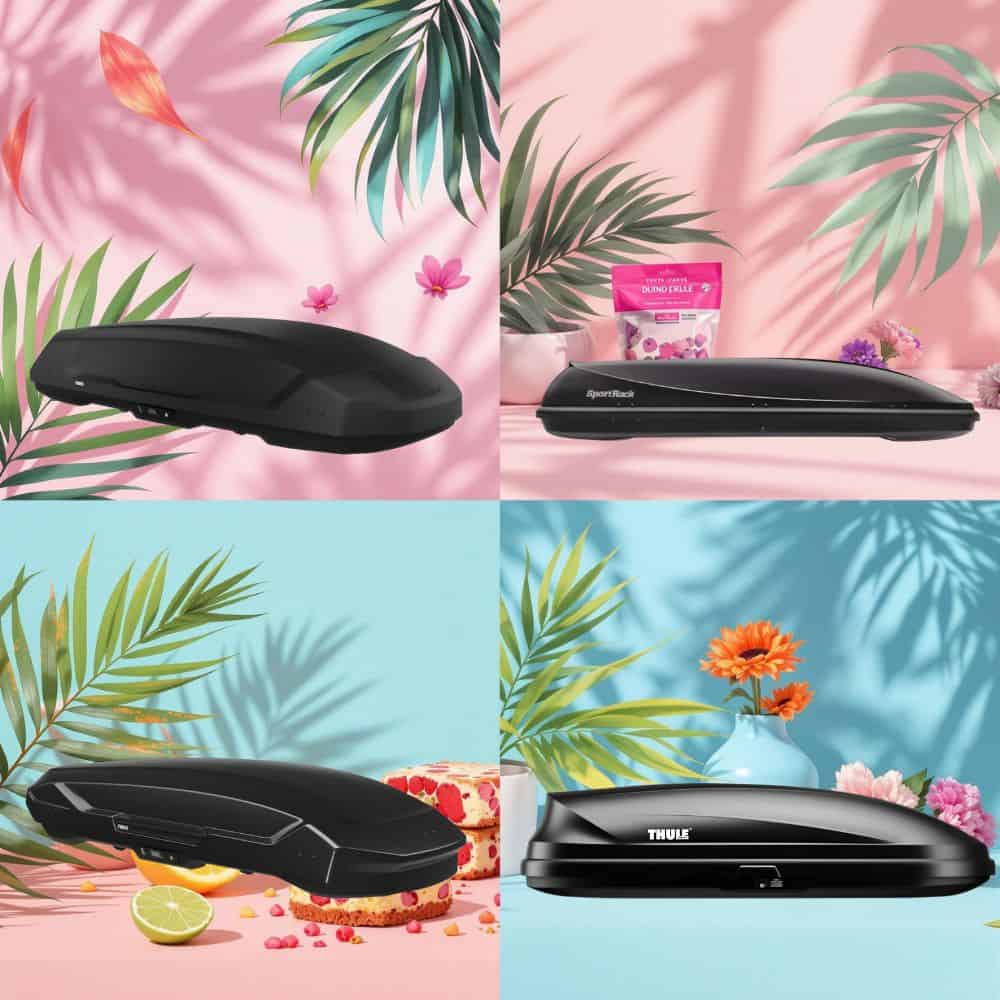
FAQs: Burning Questions, Straight Answers
1. What’s the difference between Thule Pulse Medium and Large?
How’s it going, road tripper? If you’re flying solo or rolling with one buddy, the Thule Pulse Alpine (Medium) packs 11-12 cubic feet—enough for weekend gear without feeling like you’re hauling empty space. Toss in two backpacks, a cooler, and a couple snowboards, and you’re golden. But let’s say you’ve got kids, dogs, or friends who always overpack—the Pulse Large cranks it up to 14 cubic feet. That’s room for family-sized tents, four snowboards, or enough luggage to make a baggage handler blush. Why cramp your style when you can sprawl out?
Here’s the kicker: both sizes rock the same Easy-Grip system, so mounting’s a breeze whether you’re a newbie or a pro. The Medium’s your minimalist wingman, keeping things tight and light. But the Large? It’s the MVP for group chaos, swallowing bulkier gear like inflatable paddleboards or that giant canopy you swear you’ll use this summer. And hey, 14 cubic feet isn’t just a number—it’s the difference between “ugh, we forgot the camp chairs” and “heck yeah, bring the extra marshmallows.” Fair warning: once you go big, there’s no going back.
2. Who makes the best rooftop cargo carrier?
Ever wonder why Thule keeps winning the rooftop cargo showdown? Let’s be real—Yakima’s got style, but Thule’s combo of “tough-as-nails” durability and “why isn’t everything this easy?” features hooks adventurers every time. Think about it: you’re halfway up a mountain, and your gear’s safer in Thule’s SecureLock system than your phone in a OtterBox. And if max security’s your jam, the Motion 3 series slams the door on thieves harder than a bouncer at a VIP party. Yakima’s cool, but Thule’s the buddy who shows up with a toolkit and snacks.
Here’s the kicker: Thule’s warranty isn’t just good—it’s lifetime limited, which basically means they’ve got your back longer than that one friend who still owes you $20. Yakima’s gear? Solid, but Thule’s user-friendly vibe—like the Easy-Grip knobs even your grandma could figure out—makes rough roads feel like a breeze. And let’s not forget 9 out of 10 reviewers swear by Thule’s no-fuss reliability. Why gamble on “maybe” when you can lock in “heck yes”? For real, when’s the last time your roof box made you this chill? For premium security, Thule’s Motion 3 series is unbeatable.
3. Thule vs. Yakima: Which cargo box rules?
Thule wins for ease of use and warranty, while Yakima shines in aesthetics. Need maximum storage? Yakima’s CBX 18 is roomier, but the Pulse’s value is hard to beat.
4. Is a Thule roof box worth the cash?
If you road-trip often or haul pricy gear, 100% yes. It protects your stuff, saves cabin space, and lasts forever. Plus, resale value stays high—unlike that gym membership you never use.
5. What’s Thule’s best cargo box?
The Thule Motion XT offers premium features, but the 614 Pulse delivers similar performance at a friendlier price. For hardcore adventurers, the Motion XT’s extra security is worth the splurge.
6. Thule vs. Rhino: Who’s better?
Thule’s build quality and customer service outclass Rhino. Rhino racks are cheaper, but you get what you pay for—think flimsy latches and shorter warranties.
Thule 614 Pulse vs. Motion 3 vs. Force 3 vs. SportRack Horizon: Which Roof Box Rules?

Thule Motion 3

Thule Force 3

SportRack Horizon
Design & Materials: Built for Different Vibes
The Thule 614 Pulse keeps it simple with rugged ABS plastic and a low-profile shape, making it a lightweight pick for casual adventurers. Meanwhile, the Thule Motion 3 steps up with glossy aluminum construction and a wing-shaped profile that slices through wind like a hot knife—perfect for fuel-conscious road trippers. The Thule Force 3 swaps aluminum for tough AeroSkin plastic, balancing durability with a matte finish that hides scratches better than your phone screen protector. On the budget end, the SportRack Horizon sticks to no-frills ABS plastic but surprises with impact resistance that survived desert heat and hailstorms in user tests.
Installation & Security: Click, Lock, or Wing It?
Thule’s Motion 3 and Force 3 both use the PowerClick system—think “IKEA instructions but actually satisfying.” The torque indicator clicks when mounted right, so you’re not guessing if it’s secure. The 614 Pulse relies on the Easy-Grip knobs, which are tool-free but lack the fancy feedback. SportRack’s quick-release clamps are the simplest, letting first-timers install it in under 10 minutes (yes, even while bribing kids with snacks). For security, Thule’s SlideLock on the Motion/Force 3 separates locking from opening, while the Pulse uses a basic SecureLock. SportRack’s central lock works, but it’s like comparing a bike chain to a bank vault—functional but not Fort Knox.
Storage & Capacity: From Weekend Warriors to Moving Vans
Need space for a family of five’s camping gear? The Force 3 XXL packs 21 cubic feet—enough to swallow tents, coolers, and that inflatable kayak you’ll totally use next summer. The Motion 3 offers 18 cubic feet with a sleeker profile, ideal for SUVs that hate parking garage limbo. The 614 Pulse (14 cu ft) and SportRack Horizon (16 cu ft) cater to smaller crews, though the Horizon’s 110-pound limit feels stingy next to Thule’s 165-pound max. Skiers, note this: the Motion 3 fits skis up to 200 cm, while the Horizon taps out at 178 cm.
Who’s It For? Budget vs. Premium Adventurers
- Thule Motion 3: Luxury seekers who want aerodynamics and dual-side access. Perfect for Audi drivers who’d rather spend on gas than repairs.
- Thule Force 3: Active families needing brute storage. Its AeroSkin plastic handles soccer gear, dog crates, and Costco hauls without drama.
- 614 Pulse: Minimalists who hate rooftop UFO vibes. Great for couples or solo travelers who pack light but still want Thule’s warranty.
- SportRack Horizon: First-time buyers or bargain hunters. At half the price, it’s the “I just need extra space without selling a kidney” option.
Tech & Flaws: Where They Stumble
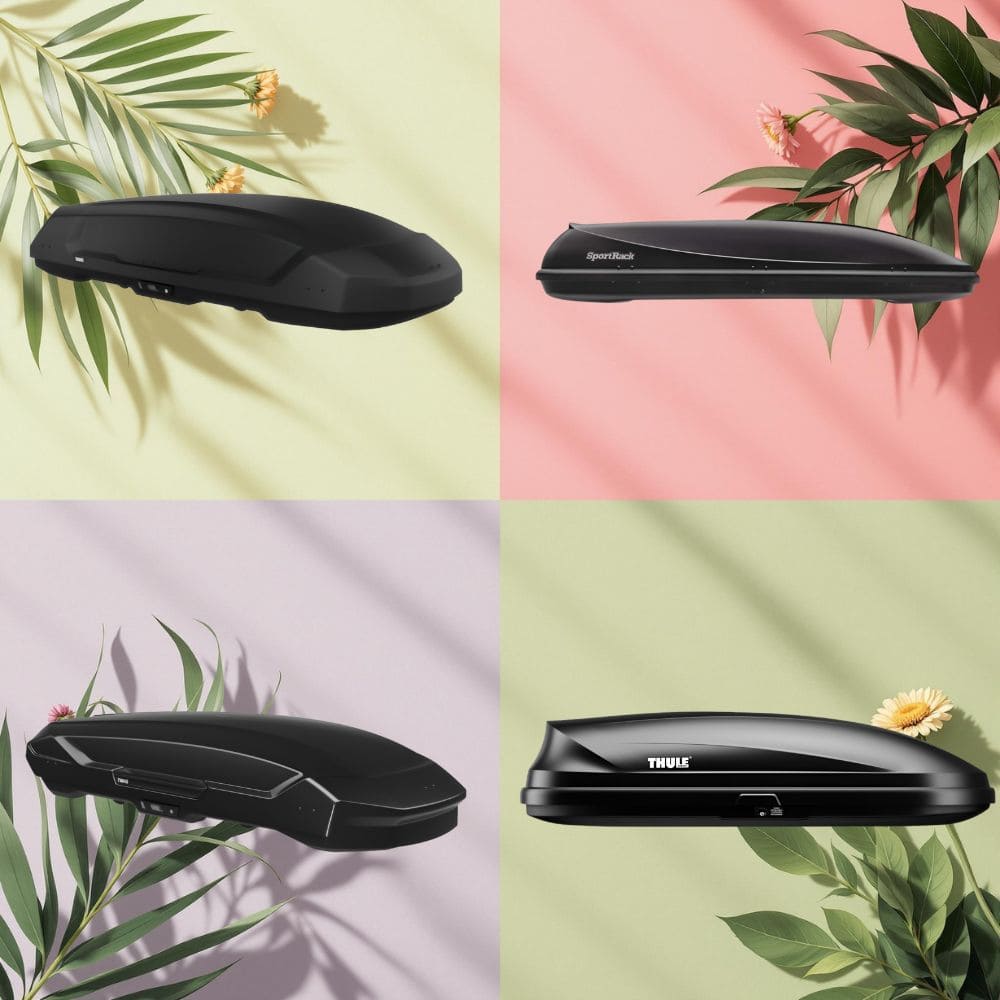
- Motion 3: That glossy finish? Scratch magnet. And the aluminum build hikes the price—prepare to weep at checkout.
- Force 3: Dual-side opening is slick, but the matte plastic dulls over time. Also, 51 pounds means you’ll need a buddy to lift it.
- 614 Pulse: Lacks the Motion 3’s premium touches. No torque indicator, and the single-side opening feels old-school.
- SportRack Horizon: Basic locks and thinner materials. Users love the price, but it won’t survive a decade of abuse like Thule’s tanks.
Brand Reputation: Thule’s Legacy vs. SportRack’s Steal
Thule’s boxes are the gold standard, backed by lifetime warranties and a rep for surviving apocalypse-level road trips. The Motion and Force series cater to tech lovers with aerodynamic tweaks and integrated accessories (hello, interior lighting!). SportRack, though? It’s the underdog that nails affordability. One user hauled 3,700 miles with zero cracks—proof that “cheap” doesn’t always mean “cheaply made.” But if resale value matters, Thule’s name holds weight on Craigslist.
Final Word: Splurge or Save?
Go Thule Motion 3 if you’re chasing cutting-edge design and have cash to burn. The Force 3 balances muscle and value for chaotic family adventures. The 614 Pulse is your low-key weekend warrior, while the SportRack Horizon is the ultimate “try before you commit” box. Just remember: Thule’s security and warranty sleep better at night, but SportRack’s price tag lets you spend leftovers on actual adventures.
Thule 614 Pulse vs. Motion 3 vs. Force 3 XXL vs. SportRack Horizon – Comparison Table
Feature | Thule 614 Pulse (Medium) | Thule Motion 3 | Thule Force 3 XXL | SportRack Horizon |
|---|---|---|---|---|
Material | ABS Plastic | Aluminum (Glossy) | AeroSkin Plastic (Matte) | ABS Plastic |
Capacity (cu ft) | 14 | 18 | 21 | 16 |
Weight | 34 lbs | 51 lbs | 51 lbs | 43 lbs |
Max Load Capacity | 110 lbs | 165 lbs | 165 lbs | 110 lbs |
Mounting System | Easy-Grip Knobs | PowerClick (Torque Indicator) | PowerClick (Torque Indicator) | Quick-Release Clamps |
Locking Mechanism | SecureLock | SlideLock (Auto-Indicator) | SlideLock (Auto-Indicator) | Central Lock |
Opening Style | Single-Side (Passenger) | Dual-Side | Dual-Side | Single-Side (Passenger) |
Aerodynamics | Low-Profile | Wing-Shaped (Best for Fuel Efficiency) | Streamlined (Reduced Drag) | Basic |
Ski/Snowboard Capacity | 3-5 Snowboards (155 cm max) | 5-7 Skis (200 cm max) | 5-7 Skis (175 cm max) | 4-6 Skis (178 cm max) |
Noise Reduction | Moderate | Best (Optimized for Quiet Ride) | Good | Basic (Some Wind Noise) |
Installation Ease | Easy (No Tools) | Fast (Click Confirmation) | Fast (Click Confirmation) | Easiest (Under 10 Mins) |
Warranty | Limited Lifetime | Limited Lifetime | Limited Lifetime | Limited (Brand Varies) |
Best For | Couples / Minimalists | Luxury / Tech Lovers | Large Families / Heavy Gear | Budget Buyers / First-Timers |
Price Range | Mid-Range | Premium | High-End | Budget-Friendly |
If you’re eyeballing rooftop cargo boxes, here’s the lowdown: the Thule Motion 3 is your go-to if you crave that sleek, silent ride—its wing-shaped design cuts wind like a ninja, saving gas and sanity. But fair warning: that premium vibe comes with a price tag that might make your eyes water. For heavy haulers, the Thule Force 3 XXL packs 21 cubic feet of space (think: family camping gear and your impulse-buy kayak). Yeah, it’s bulky, but tough enough to survive a zombie apocalypse—or at least a cross-country move.
Trying to keep it chill without breaking the bank? The Thule 614 Pulse is your Goldilocks pick—14 cubic feet of no-fuss storage that won’t turn your SUV into a spaceship. It’s lighter than your ex’s excuses and simple enough to install while half-asleep. Meanwhile, the SportRack Horizon screams “budget hero” with 16 cubic feet and a price that won’t empty your wallet. Just don’t expect Thule-level swagger—it’s basic, but legit for first-timers who just need something to hold their gear.
Still waffling? Ask yourself: “Do I need Fort Knox security or just a place to stash my junk?” The Motion 3’s techy locks and dual-side access are slick, but the Horizon’s central lock gets the job done if you’re not paranoid. Need to haul 165 pounds of gear? Force 3’s your beast. Want to keep things light? Pulse’s 34-pound frame won’t make you grunt. And hey, if cash is tight, the Horizon’s 110-pound limit still beats strapping coolers to your roof like it’s 1999. So—what’s your ride’s vibe: bougie, brawny, or bargain? 🚗💨
Step-by-Step Installation for Thule Roof Boxes (All Models)
1. Pre-Installation Prep
- Grab a buddy: Never install solo—the box is bulky (even lightweight models like the 34-lb Pulse).
- Clearance Check:
- SUVs/Trucks: Measure distance between the box and rear hatch (e.g., Jeep Grand Cherokee’s hatch swings high).
- Sedans: Ensure front hood clearance (e.g., BMW 3 Series’ sloping hood).
- Antenna Alert: Fold down antennas on models like the Honda CR-V or use a low-profile box.
2. Mounting the Box
- Positioning:
- Slide the box so rubber-lined mounts align with crossbars. For trucks (Chevy Silverado), center it over the bed.
- Min. Crossbar Spread: 23 5/8” (600mm)—critical for stability. Adjust factory racks (Toyota Camry) to widest setting.
- Hardware Setup:
- Easy-Grip (Pulse): Twist knobs counterclockwise until fully open, insert into slots, then tighten clockwise.
- PowerClick (Motion/Force): Listen for the “click” on the torque indicator to confirm secure fit.
3. Vehicle-Specific Tips
- SUVs (Ford Explorer): Use a step ladder. Place the box toward the rear to avoid blocking the sunroof.
- Sedans (Audi A4): Position the box closer to the front to prevent trunk interference.
- EVs (Tesla Model Y): Aerodynamics matter! Use Thule’s wing-shaped boxes (Motion 3) to minimize range loss.
4. Locking & Final Checks
- Lock Cylinder: Insert the Thule Comfort Key, turn clockwise to unlock. Close the lid firmly, then counterclockwise to lock.
- Safety Test: Shake the box vigorously—no movement allowed. Ensure 0.5”+ clearance from the roof to prevent scratches.
5. Post-Installation
- Load Smart: Distribute weight evenly. Max 110 lbs (Pulse) vs. 165 lbs (Motion/Force).
- Garage Warning: SUVs with boxes (e.g., Land Rover Defender) may exceed standard garage heights—measure twice!
Why This Works for Your Ride
- Factory Racks (Subaru Outback): Thule’s universal mounts clamp onto oval/round bars without adapters.
- Aftermarket Racks (Jeep Wrangler): Use T-track adapters for secure fits.
- No Racks? Install crossbars first (e.g., Thule WingBar Evo)—most boxes won’t mount directly to naked roofs.
Our team is creating outdoor-gear relevant articles with passion. If our articles can help you to find the correct solutions for your questions, we will be happy about that. In the content creation process, we usually collect accurate and useful information online or offline to compile our content in an organized way. Consequently, we can guarantee that you can discover some expected answers to your questions. We appreciate your time on our site.

